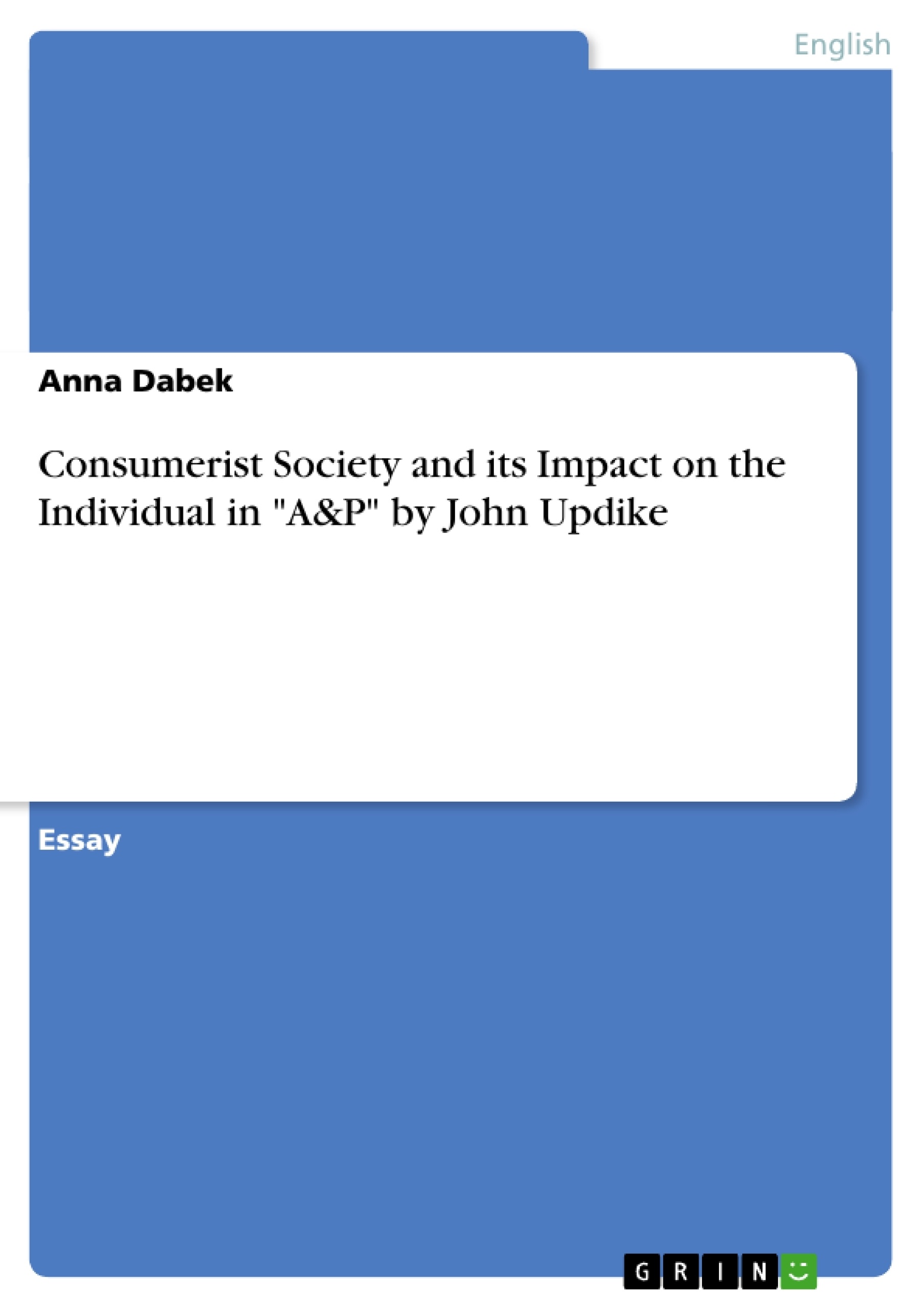John Updike’s short story “A&P”, written in the early 1960’s, is considered to be a reflection of the structure of American society at that time. The action of the story takes place in a grocery shop. The choice of such a setting was not made at random. The regulations applied in this supermarket symbolize the norms of society in which the main character, Sammy, lives. The protagonist’s encounter with the three young girls dressed in bathing suits reveals his attitude towards the social order he is unwilling to conform to. At the same time, despite Sammy’s scepticism, it cannot escape the reader’s attention that the character’s view of reality was undoubtedly shaped by the community he exists in.
First of all, the role of the grocery shop is worth mentioning. The place is situated “right in the middle of town, and if you stand at our front doors, you can see two banks and the Congregational church and the newspaper store and three real-estate offices (…)” As Timothy Sexton points out, the supermarket is close to the financial, spiritual, informational and property centres of the town.
Table of Contents
- Consumerist Society and its Impact on the Individual in "A&P" by John Updike
- The Role of the Supermarket
- Stereotypes and the Character of Sammy
- The Protagonist's Struggle for Independence
Objectives and Key Themes
This analysis delves into John Updike's short story "A&P," exploring the impact of consumerist society on the individual through the protagonist, Sammy. The story examines the societal norms and expectations that shape Sammy's worldview, while also highlighting his struggle for individuality.
- Consumerism as a Dominant Social Force
- The Influence of Societal Norms on Individual Identity
- The Conflict Between Conformity and Rebellion
- Stereotyping and its Impact on Perception
- The Struggle for Independence and Self-Discovery
Chapter Summaries
The analysis begins by examining the symbolic significance of the supermarket setting in "A&P." It explores how the grocery shop, with its abundance of commodities, represents the dominant consumerist culture of the time. The customers, who are characterized as "sheep" for their passive conformity, are shown to be driven by consumption and uncritical of the societal structures that govern their lives.
Next, the essay delves into the protagonist's character, Sammy, and analyzes his relationship with the prevailing societal norms. Sammy's perception of women, particularly his objectification of the three girls in bathing suits, reflects the prevalent gender stereotypes of the 1960s. The analysis explores Sammy's struggle to navigate these societal pressures and the challenges he faces in trying to break free from them.
Finally, the essay focuses on Sammy's efforts to achieve independence. The protagonist's act of quitting his job, while seemingly impulsive, is interpreted as a symbolic rejection of the consumerist culture that surrounds him. This section also examines the ways in which Sammy's perception of reality is influenced by his active imagination and how he envisions a future beyond the confines of the supermarket.
Keywords
This analysis examines the key themes of consumerism, conformity, rebellion, societal expectations, individual identity, gender stereotypes, and self-discovery. It explores the interplay of these themes within John Updike's short story "A&P."
- Quote paper
- M.A. Anna Dabek (Author), 2008, Consumerist Society and its Impact on the Individual in "A&P" by John Updike, Munich, GRIN Verlag, https://www.grin.com/document/284448




